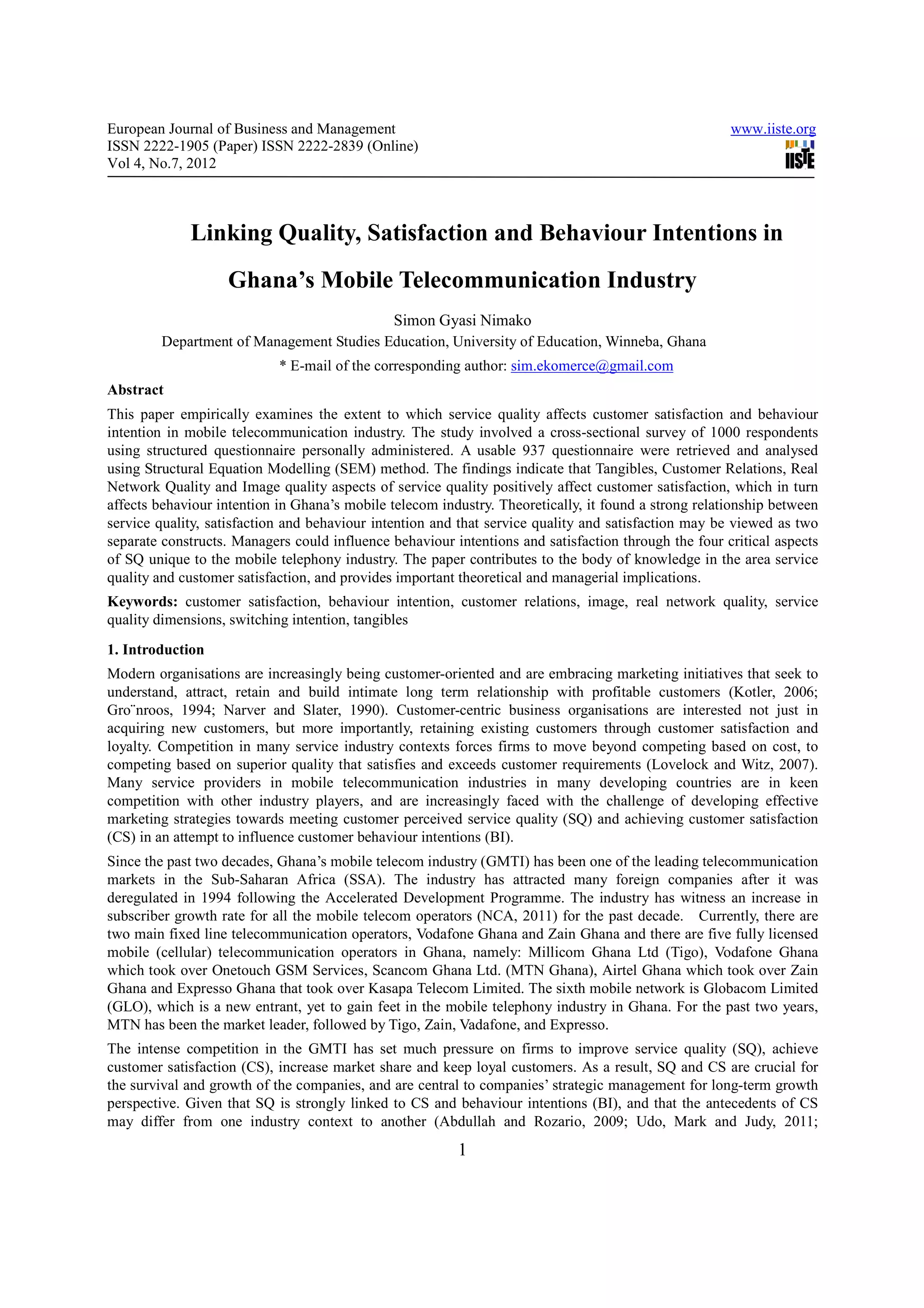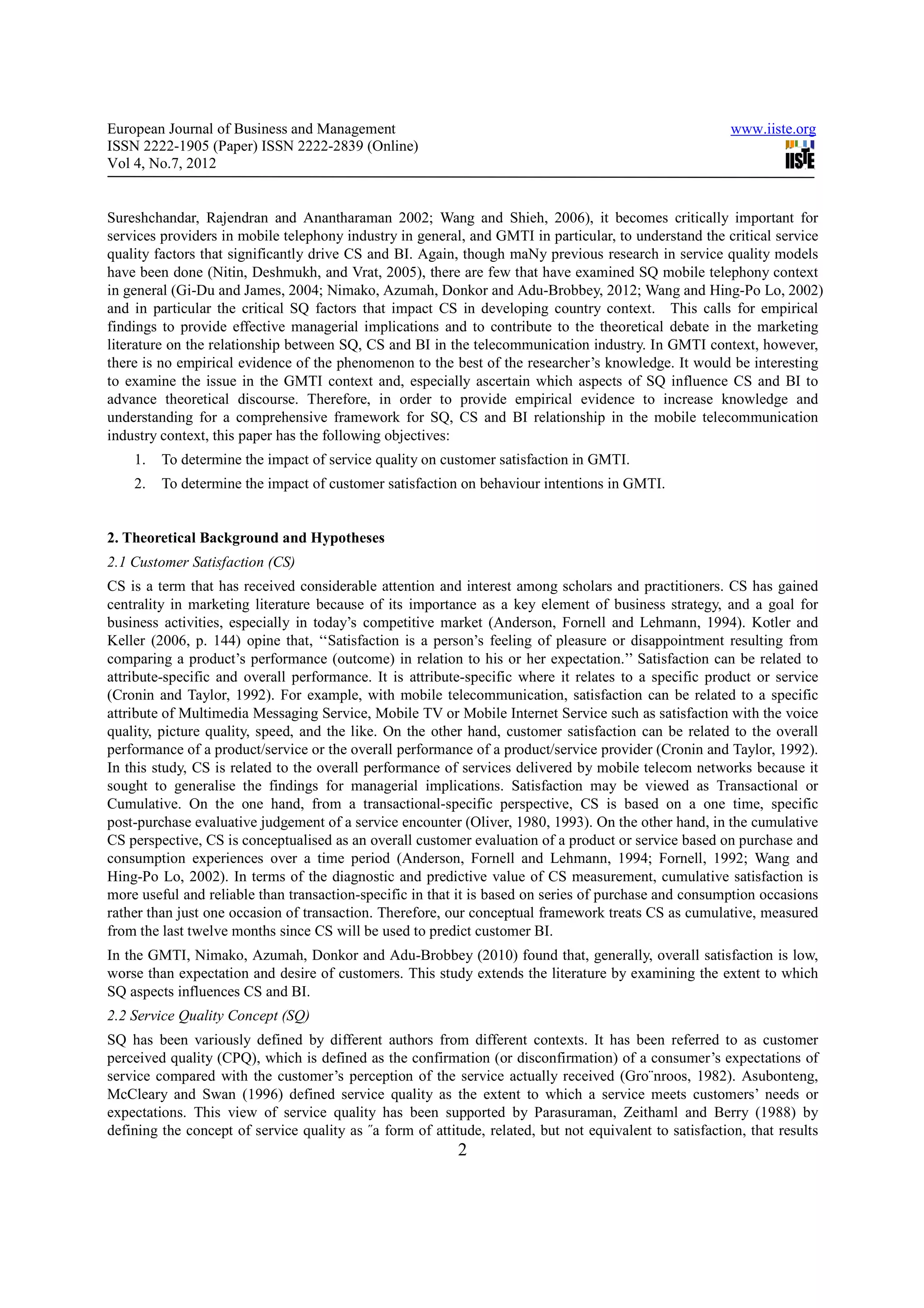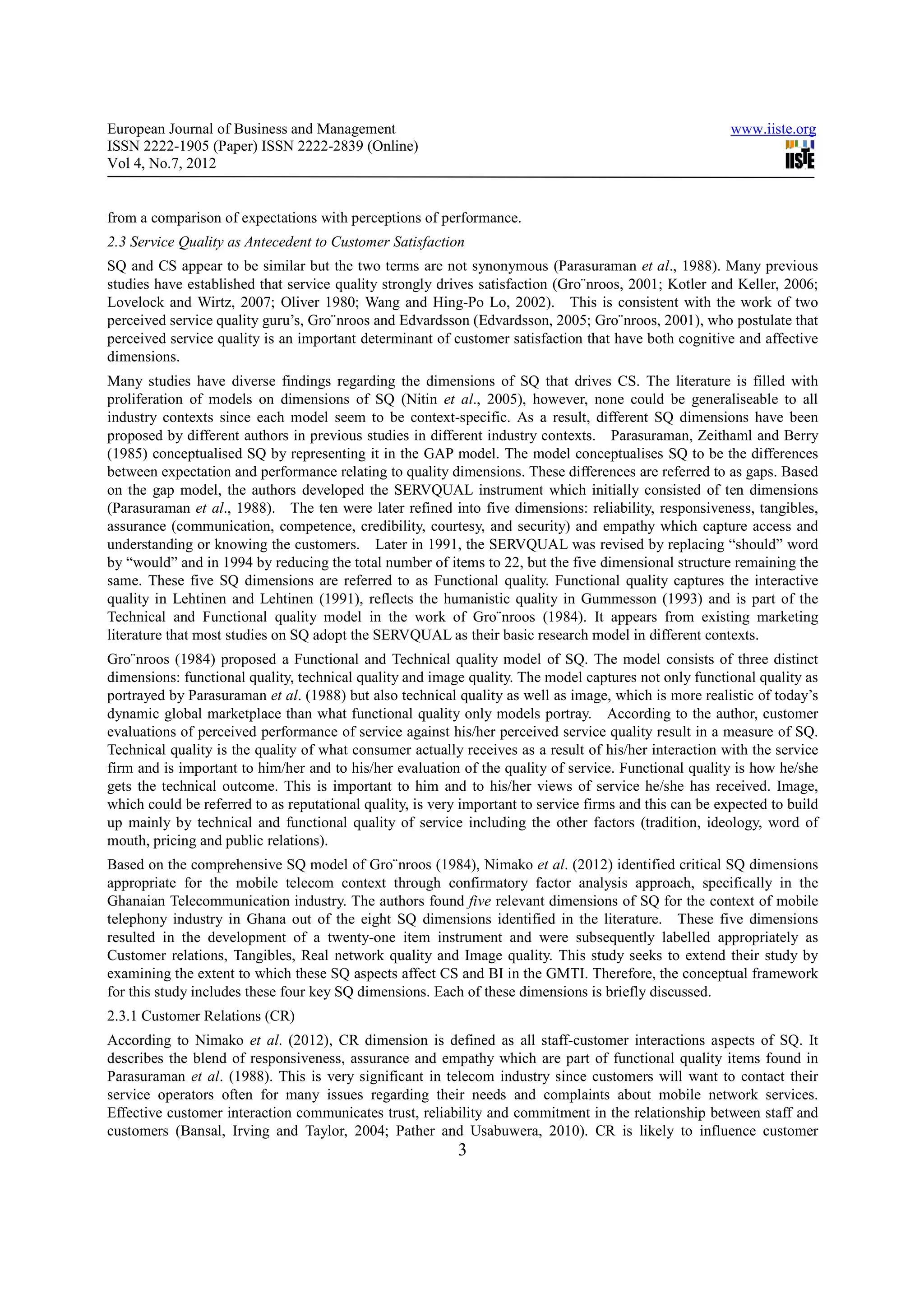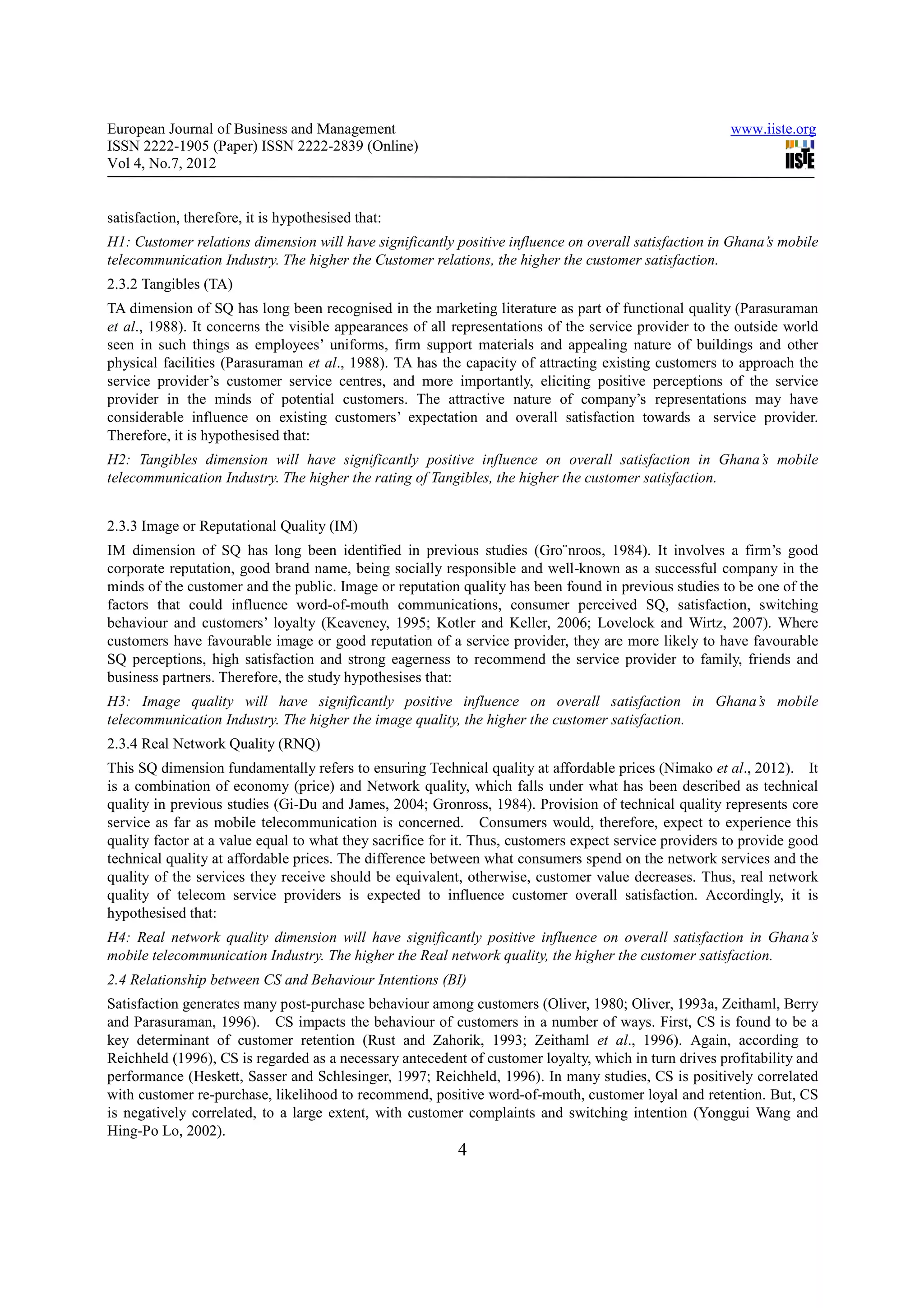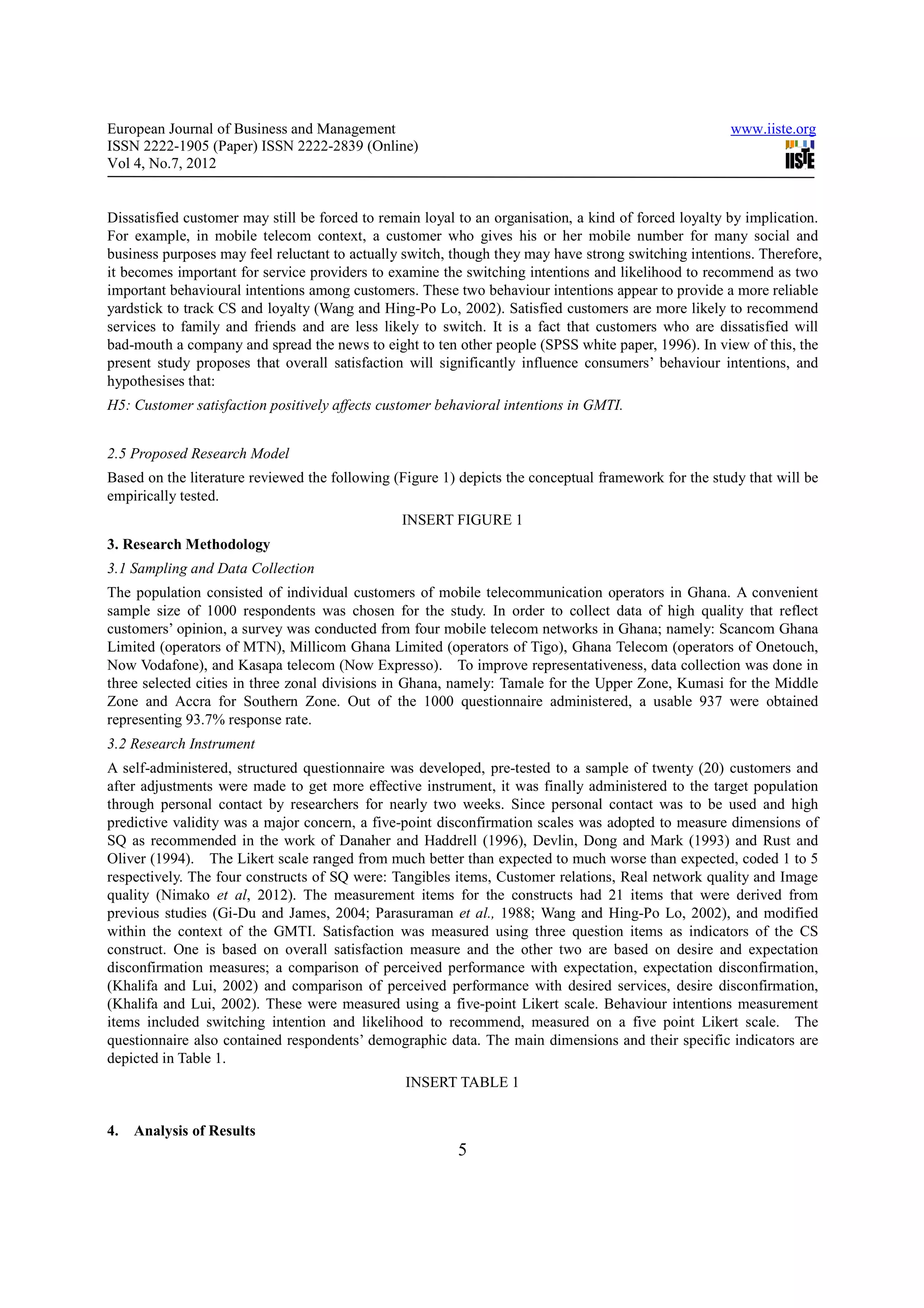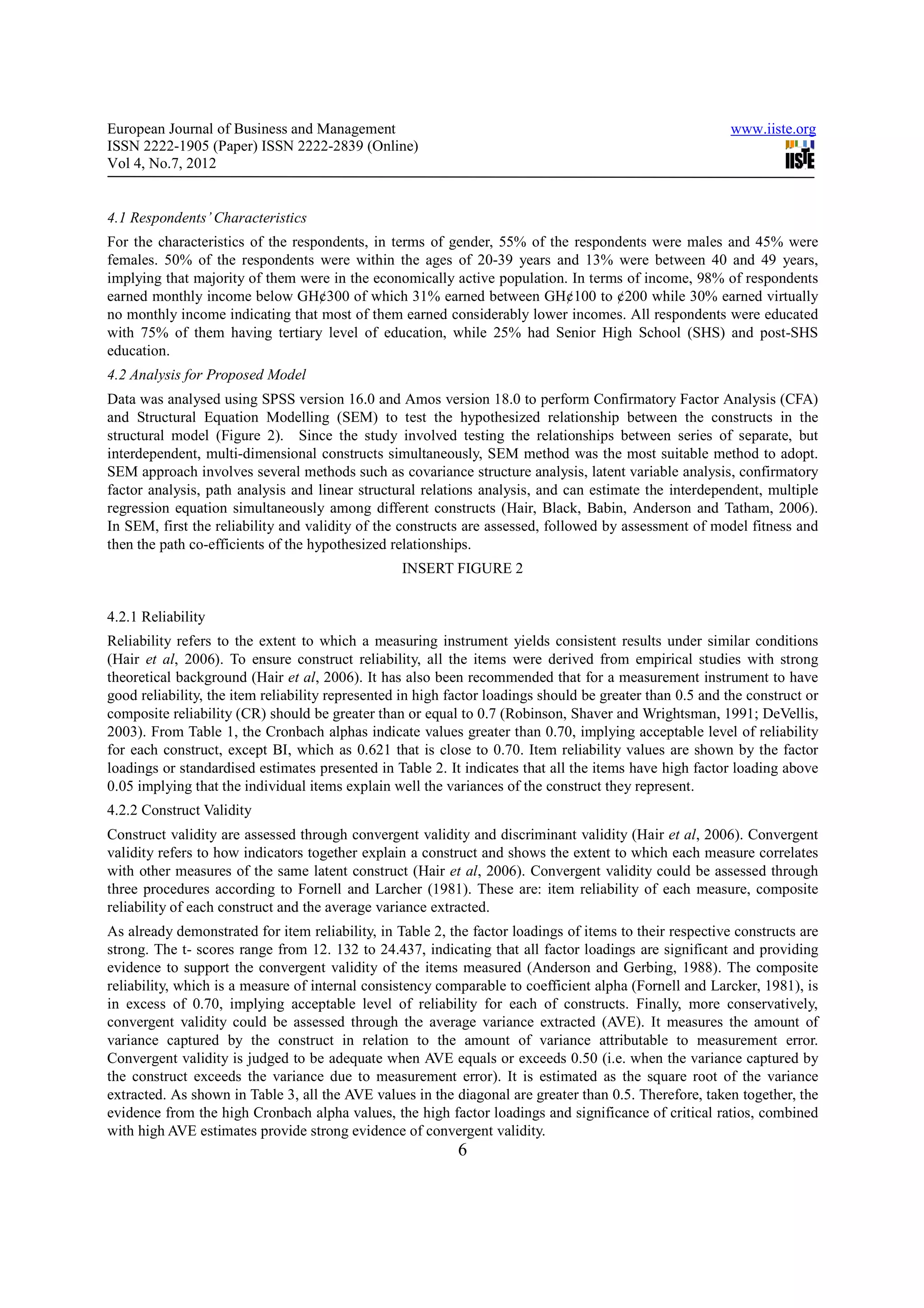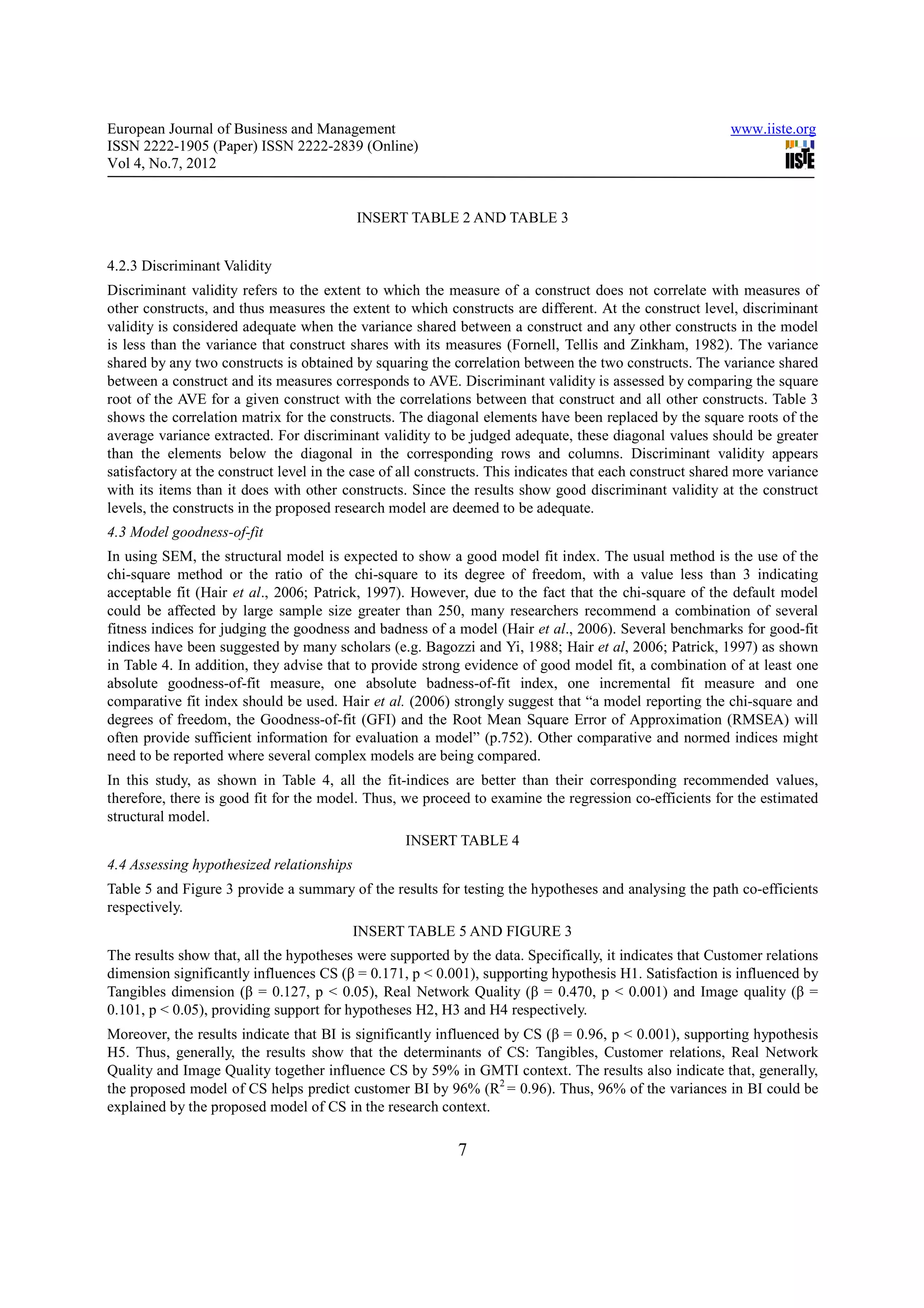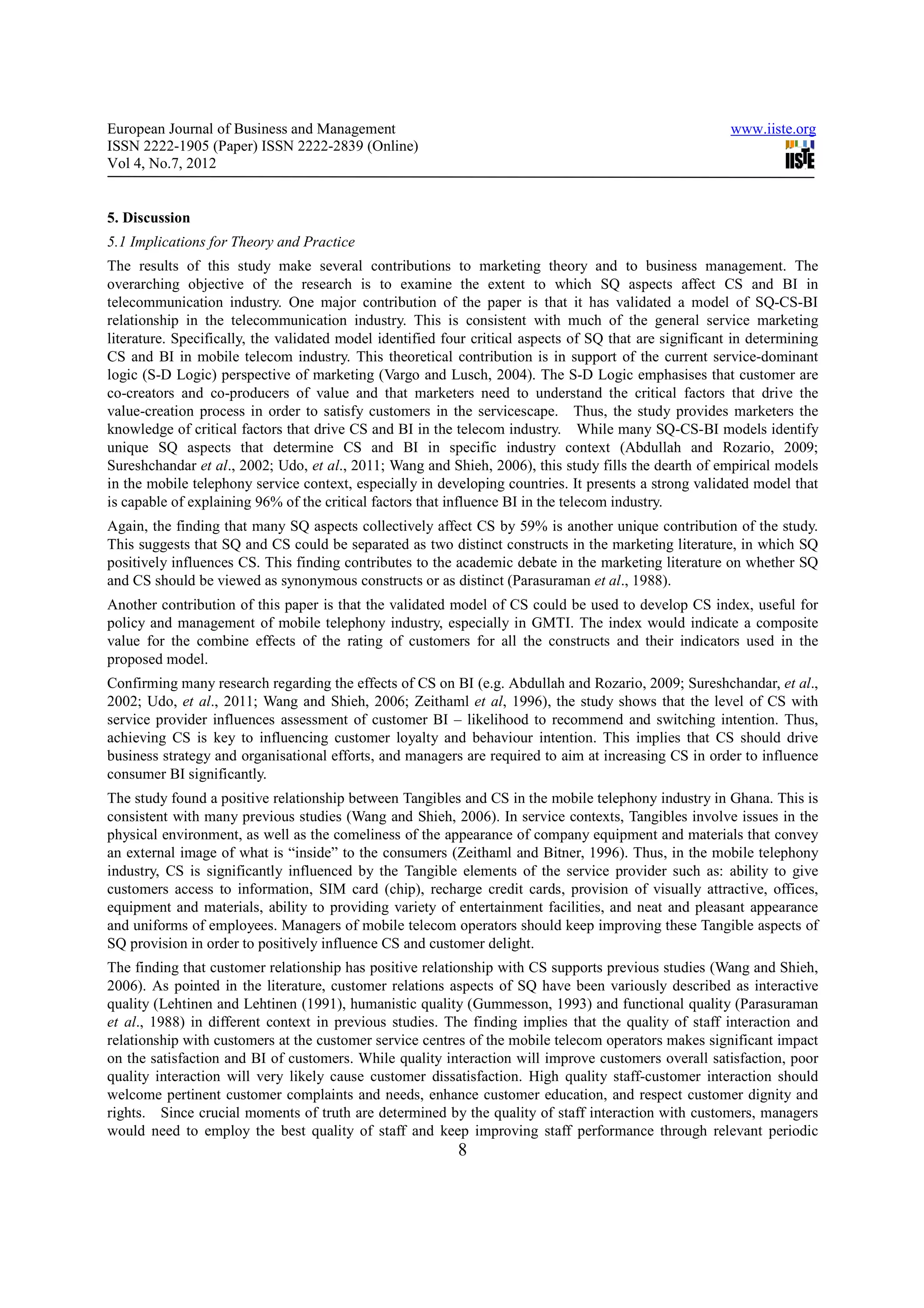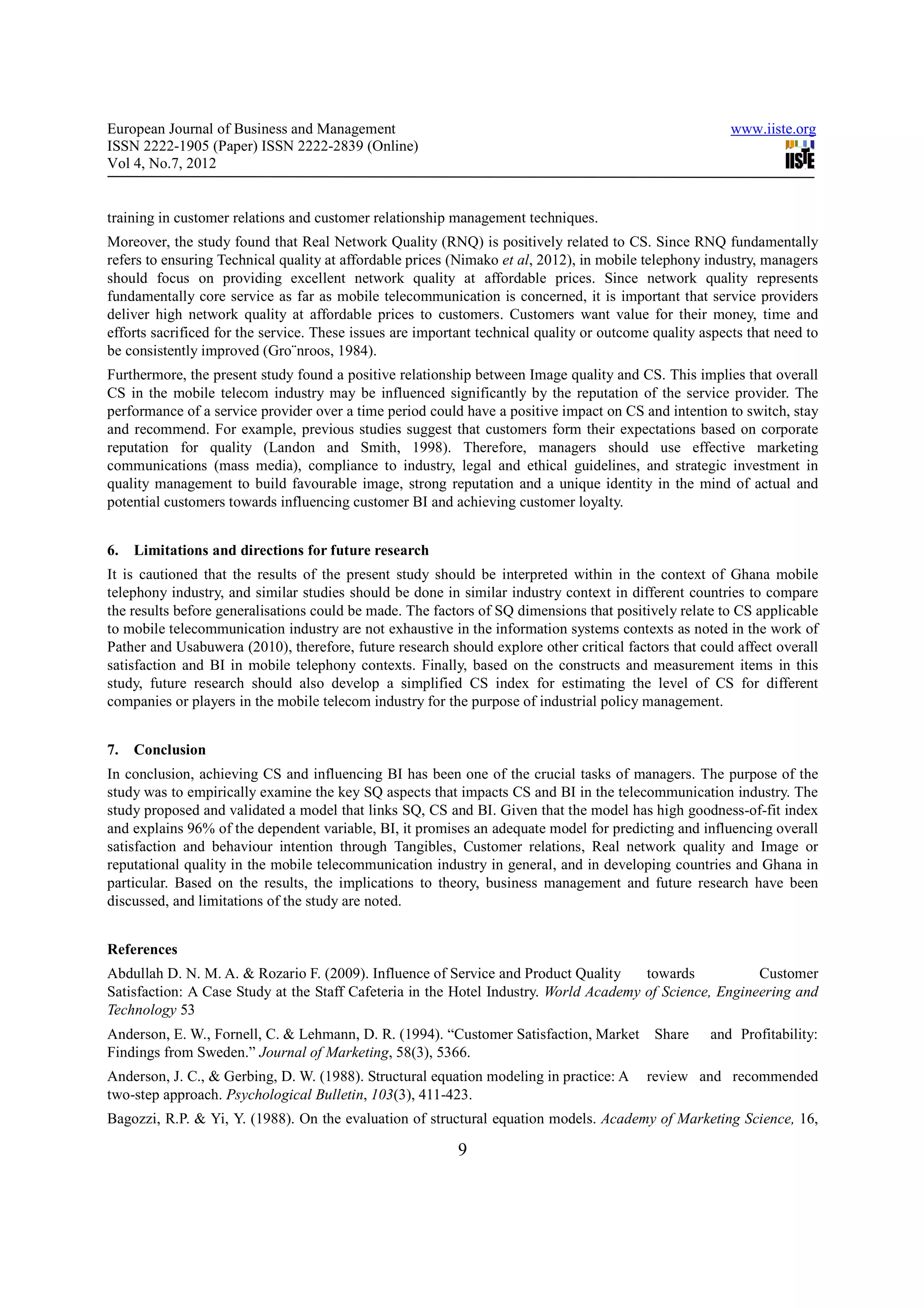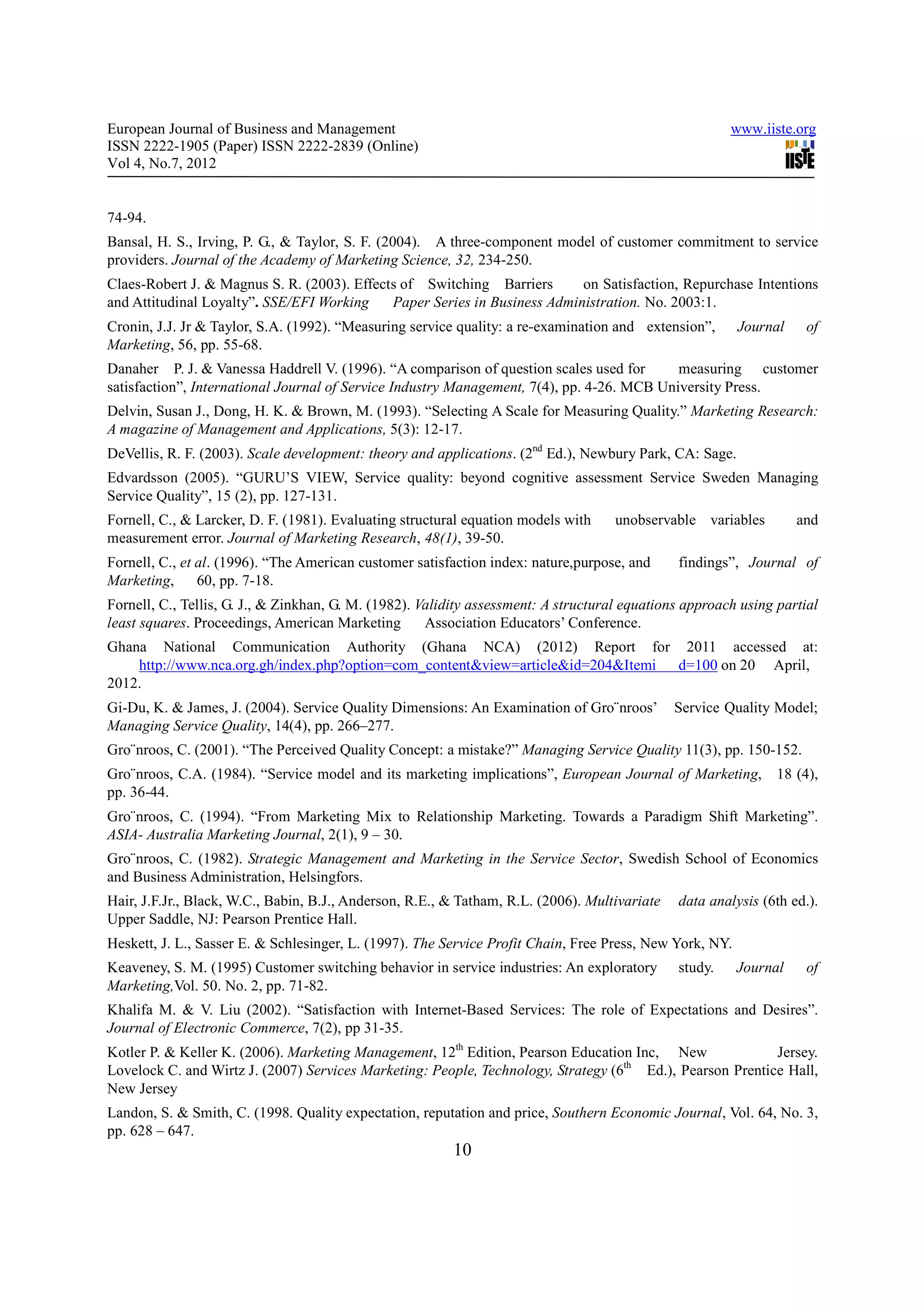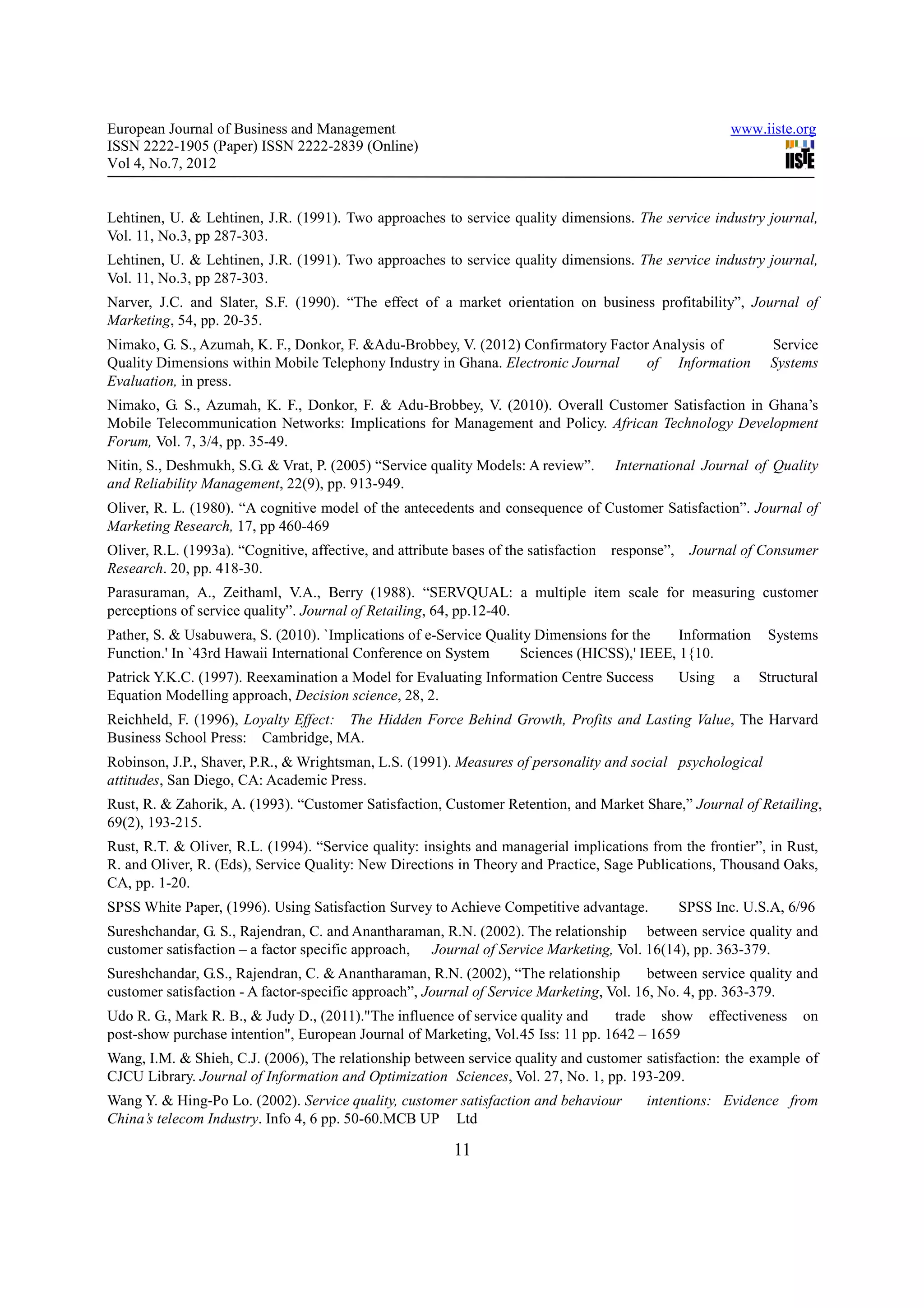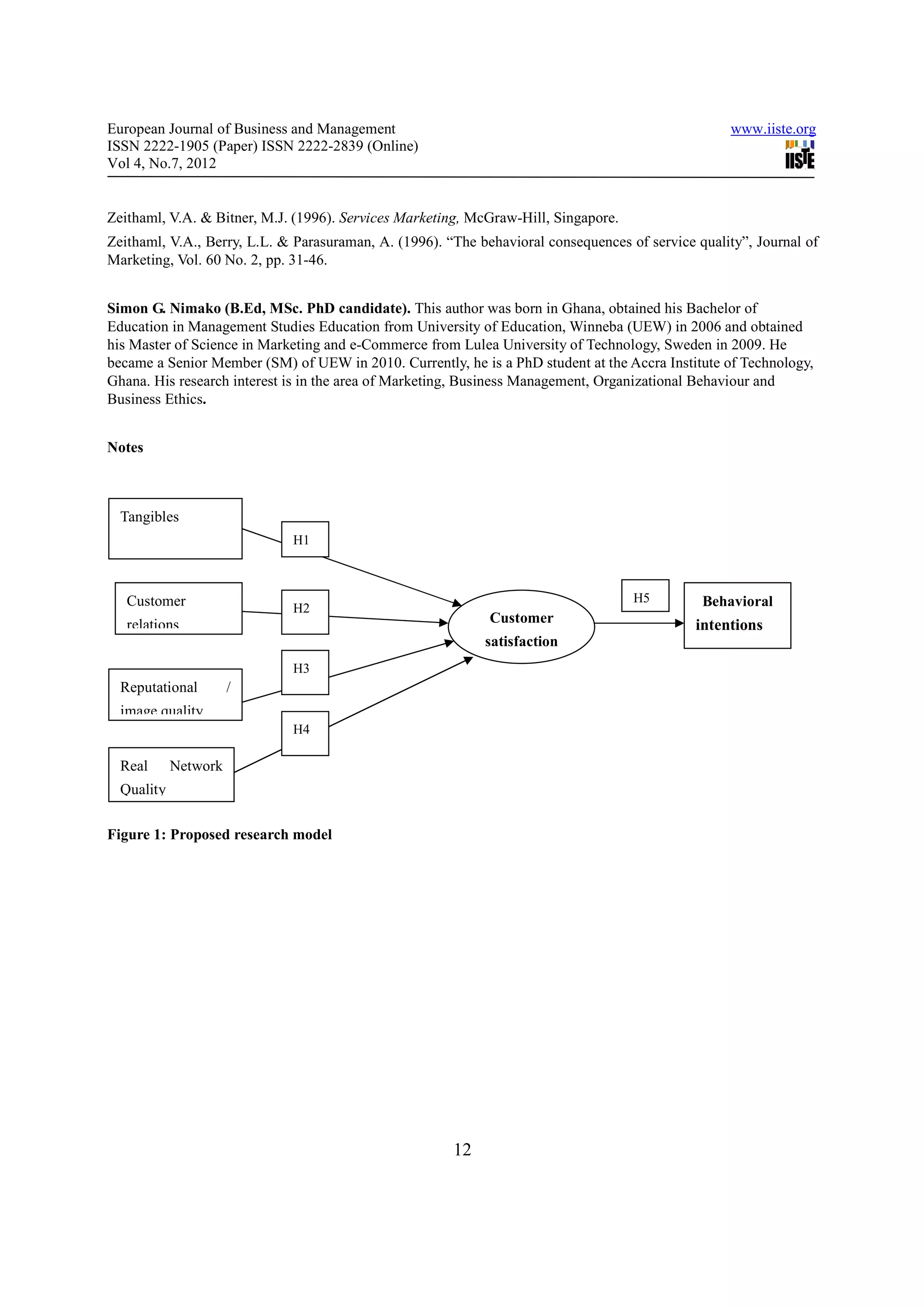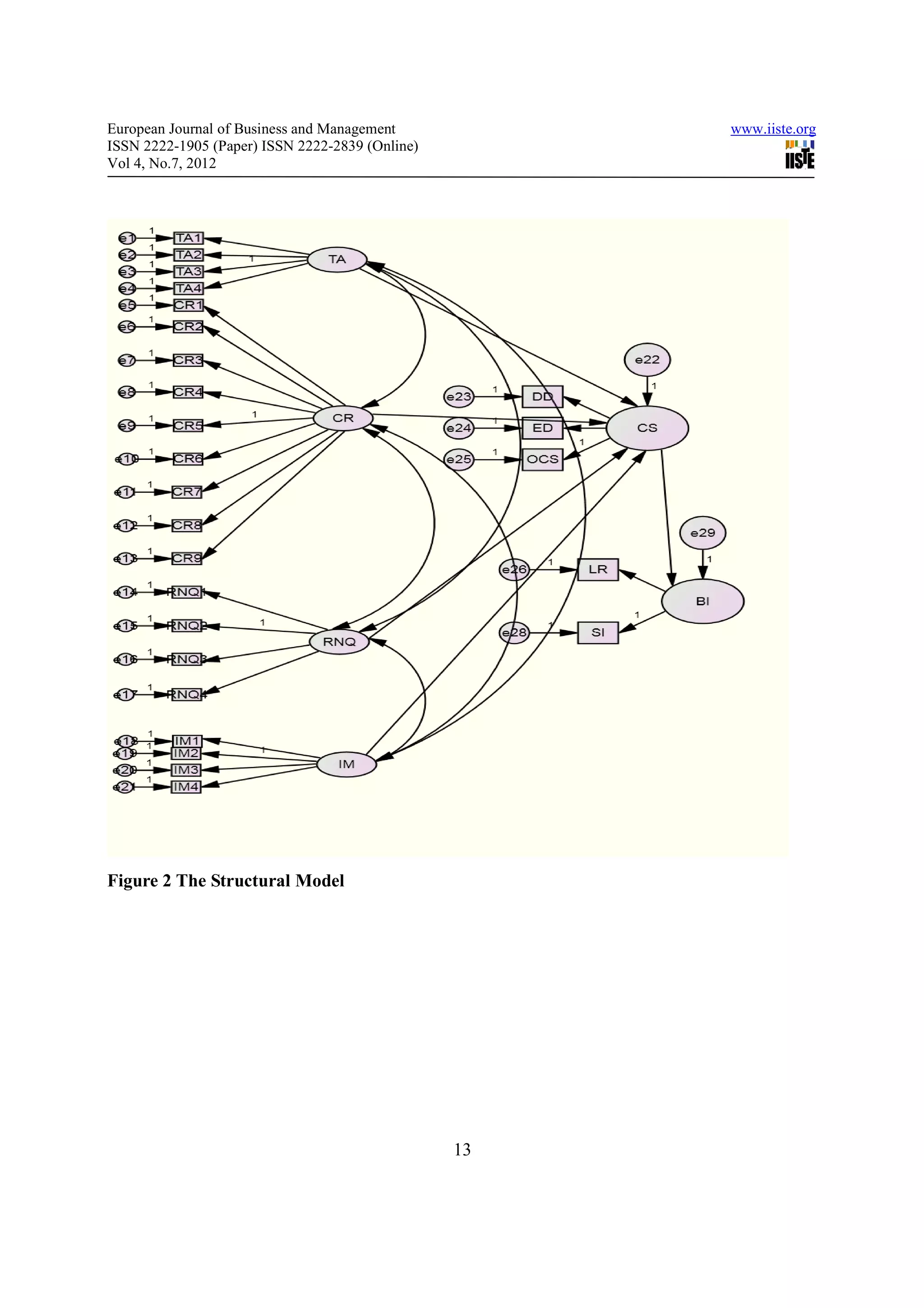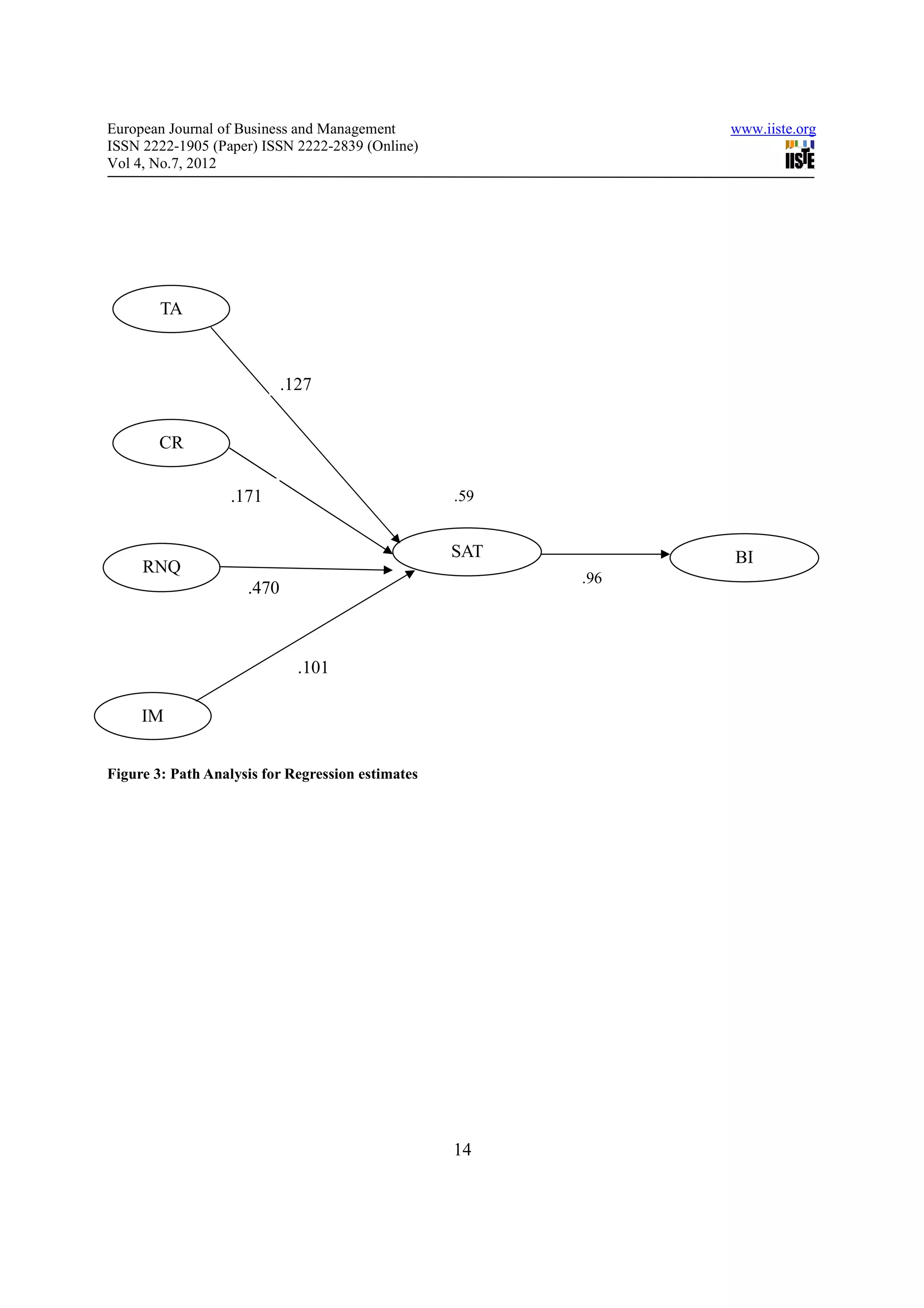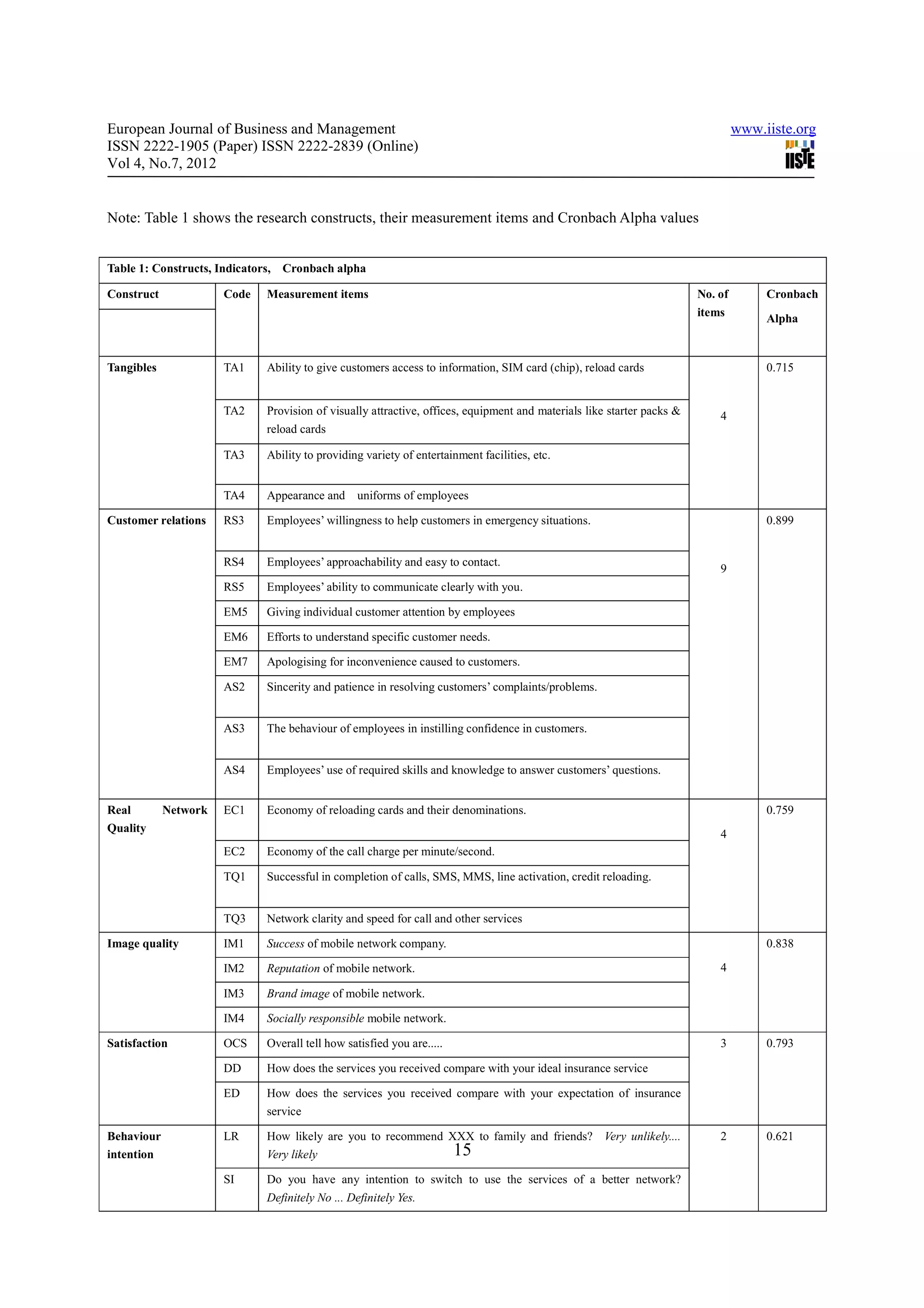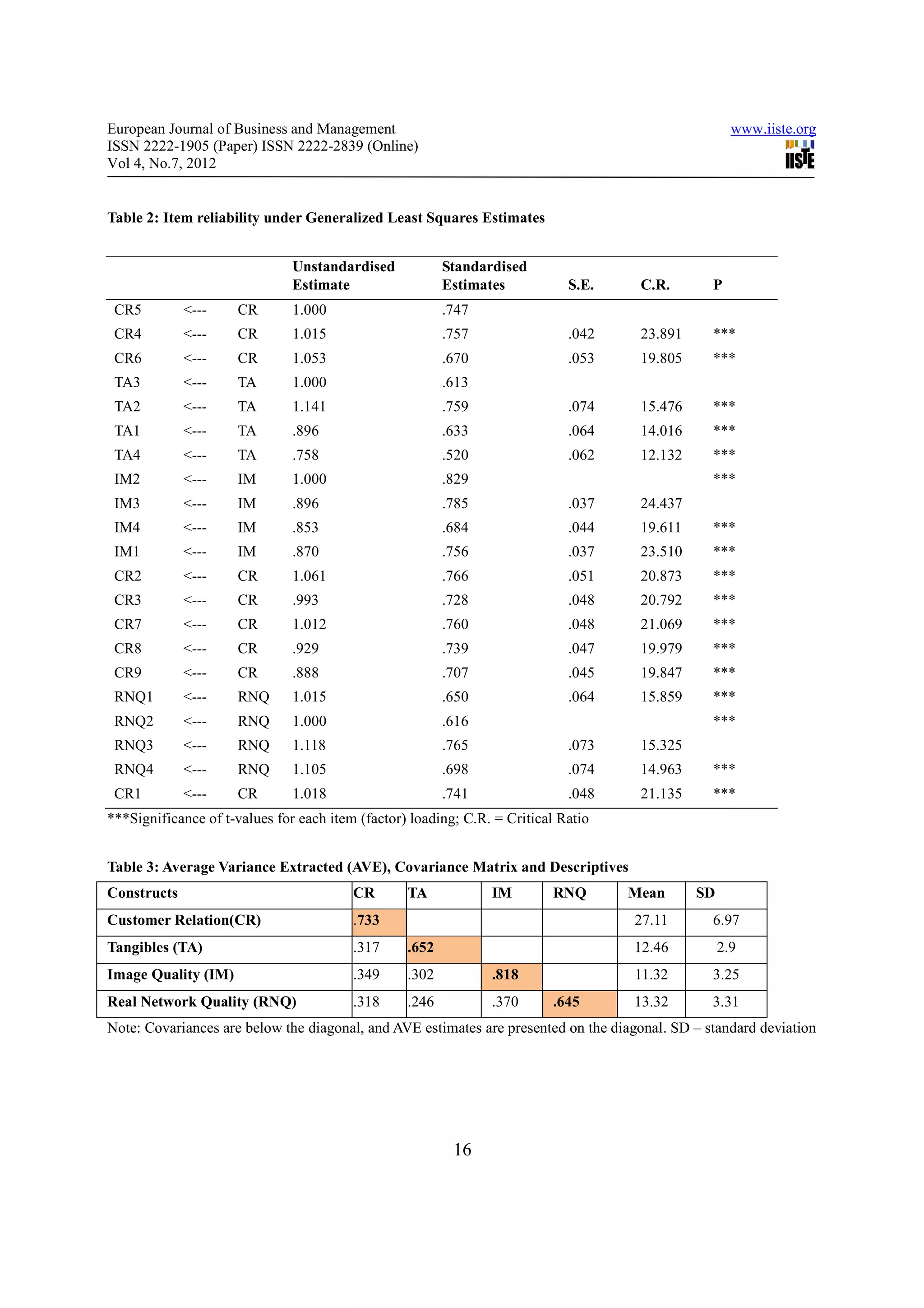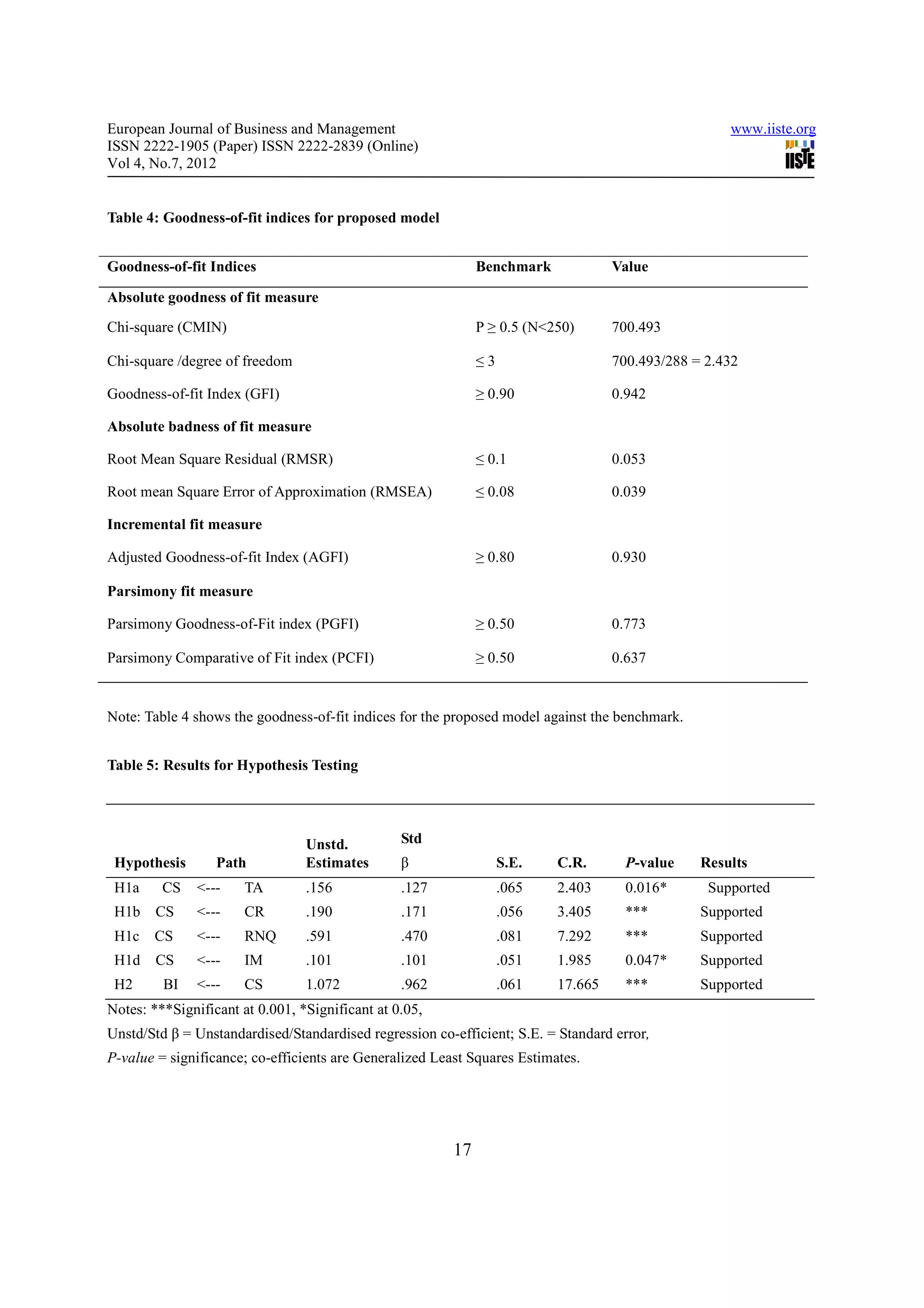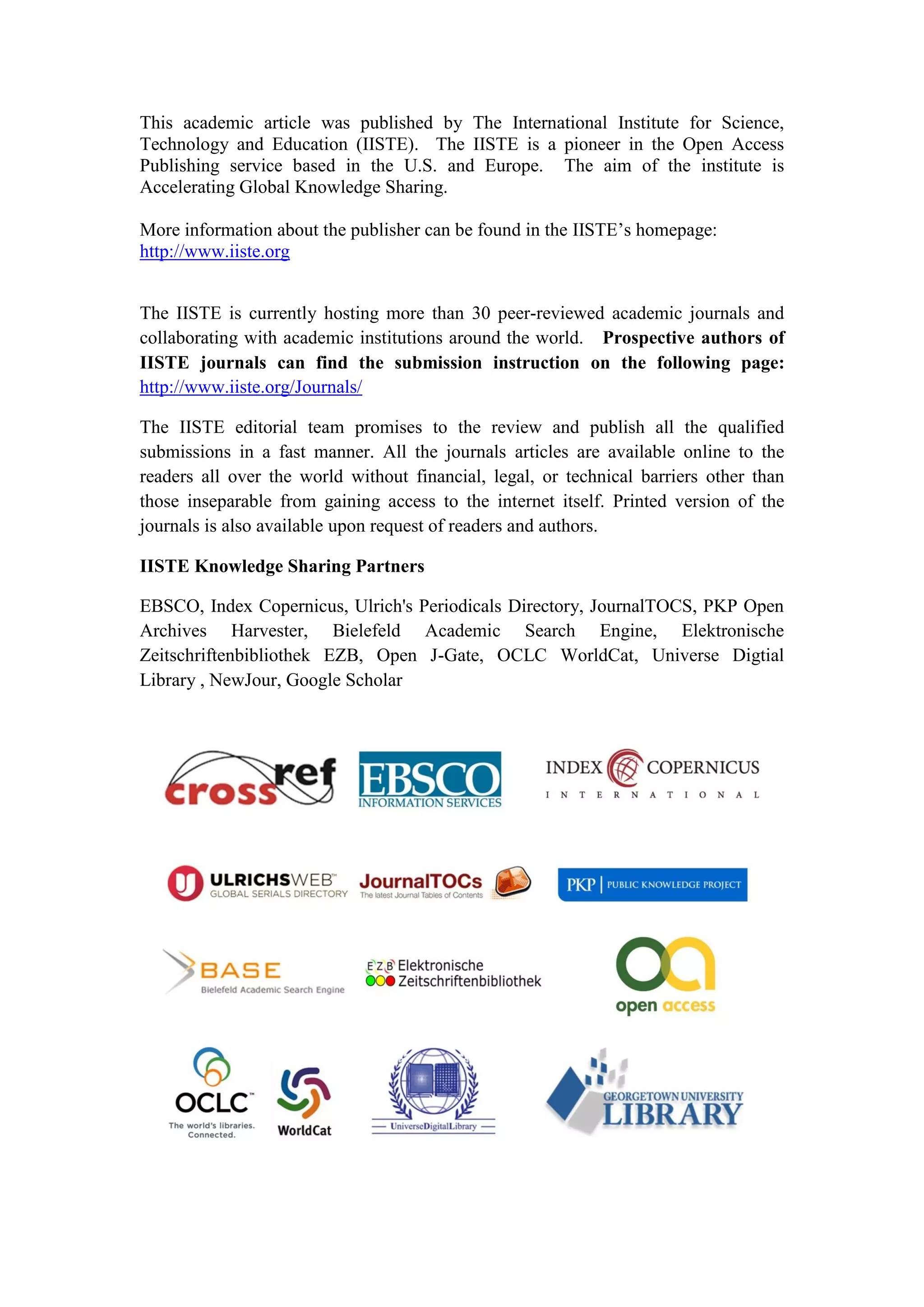This document discusses a study that examines the relationships between service quality, customer satisfaction, and behavioral intentions in Ghana's mobile telecommunications industry. Specifically, it aims to determine how different aspects of service quality (customer relations, tangibles, image quality, and real network quality) impact customer satisfaction, and how satisfaction then impacts behavioral intentions. The study is based on a survey of 1000 mobile phone users in Ghana and uses structural equation modeling to analyze the relationships. The findings indicate that the four aspects of service quality all have a positive influence on customer satisfaction, which then positively impacts behavioral intentions. The study contributes to understanding these relationships in the context of Ghana's mobile industry.
